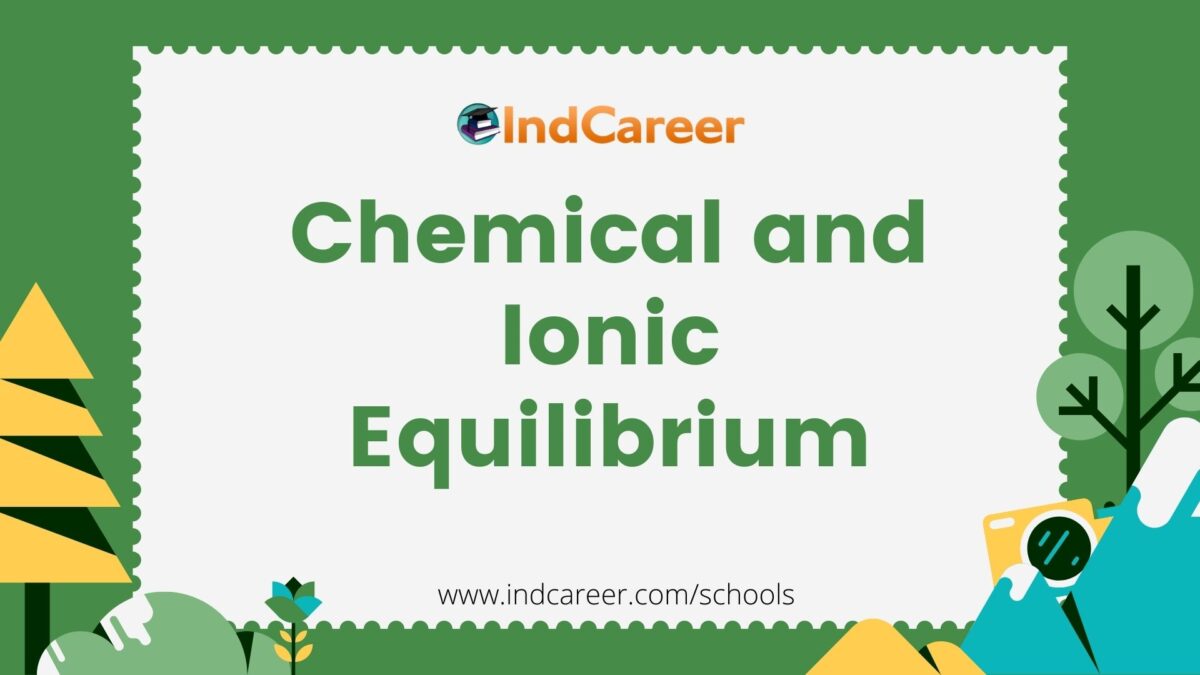Contents
Equilibrium
Equilibrium is the state of a process in which the properties like temperature, pressure, and concentration etc of the system do not show any change with passage of time.
=> In all processes which attain equilibrium, two opposing processes are involved.
=> Equilibrium is attained when the rates of the two opposing processes become equal.
=> If the opposing processes involve only physical changes, the equilibrium is called Physical Equilibrium.
=> If the opposing processes are chemical reactions, the equilibrium is called Chemical Equilibrium.
Physical Equilibrium
=> Solid – liquid Equilibrium: H2O(s) = H2O(l)
=> Liquid – Gas Equilibrium: H2O(l) = H2O(g)
=> Solid – Solution Equilibrium: Salt(Solid) = Salt(in solution)
=> Gas –Solution equilibrium: CO2(g) = CO2(in solution)
Equilibrium in Chemical Process
Reversible reaction: A reaction in which not only the reactants react to form the products under certain conditions but also the products react to form reactants under the same conditions
Examples: 3Fe(s) + 4H2O(g) \rightleftharpoons Fe3O4(s) + 4H2(g)
Irreversible reaction: A reaction cannot take place in the reverse direction, i.e. the products formed do not react to give back the reactants under the same condition.
Example: AgNO3(aq) + NaCl(aq) → AgCl(s) + NaNO3(g)
Characteristics of Equilibrium State
It can be attained only if the reversible reaction is carried out in closed vessel.
It can be attained from either side of the reaction.
A catalyst can hasten the approach of equilibrium but does not alter the state of equilibrium.
It is dynamic in nature i.e. reaction does not stop but both forward and backward reactions take place at equal rate.
Change of pressure, concentration or temperature favours one of the reactions (forward or backward) resulting in shift of equilibrium point in one direction.
=> Law of Mass Action & Equilibrium Constant
“The rate at which a substance reacts is directly proportional to its active mass and rate of a chemical reaction is directly proportional to product of active masses of reactants each raised to a power equal to corresponding stoichiometric coefficient appearing in the balanced chemical equation”.
Fore reaction aA + bB \rightleftharpoons cC + dD
Rate of reaction ∝ [A]a.[B]b
or rate of reaction = K[A]a[B]b
where K is rate constant or velocity constant of the reaction at that temperature.
=> Unit of rate constant (K)
K = \frac{Rate\ of\ reaction}{[A]^a[B]^b}=\frac{molL^-^1 s^-^1}{(molL^1^)^a^+^b } = (molL^-^1)^1\ ^t^o\ ^n\ s^-^1
Ionic Product:
a) Product of ionic concentration due to ions already present in water or from a salt.
b) I.P. may be and may not be equal to Ksp.
c) If ionic Product (IP) > Ksp ; precipitation takes place till I.P. equals Ksp
d) If Ionic Product < Ksp ; a precipitate will not be formed and the solution will be unsaturated.
e) If Ionic Product = Ksp ; a precipitate will not form an the solution is satuated in that salt.
